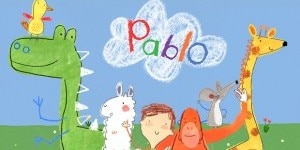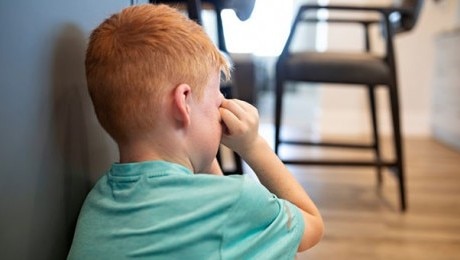
all
Activities
Simple Mindfulness Activities Kids (And Parents!) Can Start Right Now
By Dyan Robson, AND NEXT COMES L
PHOTO © guzznomklao/Twenty20
Aug 23, 2019
It seems like everyone is talking about mindfulness these days, doesn't it? It's more than a buzzword though, I promise.
There are plenty of benefits to teaching you and your kids mindfulness including reducing stress and anxiety, teaching self-regulation skills, strengthening self-control and recognizing and understanding the way emotions feel in our bodies — and so much more.
What Is Mindfulness?
Mindfulness is about focusing on the present moment by tuning into our thoughts, feelings, bodily sensations and what's around us. It's all about being aware of what's happening here and now, slowing down and calming your mind.
Mindfulness activities can be practiced anywhere and anytime, and you can do these types of activities individually or as a group (of any size). Lots of teachers are even implementing mindfulness into their classrooms.
So if you've been wondering how to start teaching your kids (and yourself) about mindfulness, here are some simple ways you can get started.
Relevant Reading: 7 Self-Regulating Apps For Kids That Teach Mindfulness Techniques
Mindful Breathing
It's as simple as taking a couple of deep breaths a few times each day. You can even schedule deep breathing breaks for you and your child.
I recently came across an idea to pick a trigger word and each time you hear that word, you pause and take a couple of deep breaths. The suggested word was "mom," and goodness, could you imagine how many times you would sneak in some mindful breathing every day if you used it as your trigger word?
You can even use a visual cue to remind you to pause and do some mindful breathing. For example, every time you stop at a red light while driving, encourage your kids to join you as you take a couple of deep breaths.
2 Deep Breathing Techniques To Try:
- Lie down on your back, place a small toy or stuffed animal on your belly, take slow deep breaths and watch the toy move up as you inhale and down as you exhale.
- Place one hand on your belly and the other on your chest, and breath deep so you can feel the rise and fall of your chest and belly as you breathe.
Noticing Games
You likely remember playing "I spy" games on road trips as a child. These types of games are a great way to get started with mindfulness as they encourage you to be aware of what's around you.
You can even switch it up to do "I hear." Instead of describing what you see, describe what you hear. This variation encourages you to focus on tuning into the sounds around you or even inside you.
3 Noticing Games To Try:
- Notice 5 Things: Look around you and name five things. Then encourage your child to do the same. Keep taking turns until you both feel calm and grounded.
- The ABC Grounding Technique: Look around and try to name an object you see or hear that starts with as many letters of the alphabet as possible, starting with A and then B, and so on.
- The 5-4-3-2-1 Grounding Technique: This activity makes use of the five senses. Have you and your child name five things you can see, four things you can feel, three things you can hear, two things you can smell and one thing you can taste.
Other types of noticing games can include going on a sound scavenger hunt or watching clouds as they move through the sky.
You'll Also Love: How To Do Nothing And Still Have Quality Time With Your Family
Explore Your Emotions
Mindfulness includes being aware of your emotions and how they feel inside your body. And this is certainly an area that a lot of kids need help with. (OK, maybe some adults too.)
2 Ways To Explore Your Emotions:
- Name your emotions. Stop what you're doing. Pause. Tune into how your body is feeling right now. Then simply announce the feeling out loud. For example, you would just say the word "angry" if that is how you are feeling. Acknowledge the feeling and just allow it to be there. Don't judge or dwell, just simply allow it to exist.
- Start a gratitude journal. Every night, write down three things or people you are grateful for and why. There are even free apps that will provide prompts if you find this exercise particularly difficult. I have been doing this for almost a year and have found it makes a huge difference. It helps me focus on what was good, positive and really downright important during the day, instead of dwelling on some negative thing that might have ruined my day.
So there you have it, a bunch of super simple mindfulness activities you can start sneaking into your daily routine — today! And remember, these ideas are meant to inspire you and your kids, so feel free to adapt or modify them as needed. Get creative!
Most Popular
-
 Ages:
Ages:
allStories
Childhood Is Too Short So Just Let The Teens Trick-Or-Treat
-
 Ages:
Ages:
allFamily Health
Why Being A Halloween Candy Micromanager Can Create Long-Term Problems For Kids
-
 Ages:
Ages:
allStories
My Daughter Wore a 1960s-Inspired ‘Indian’ Costume — And Here’s How I Took Care of That
-
 Ages:
Ages:
allStories
I’m Not Your Typical Mom — Here Are 5 Assumptions You Have All Wrong
-
 Ages:
Ages:
allStories
Here’s Why We’re Ditching Trick-or-Treating This Year
















 Remembrance Day
Remembrance Day



































Add New Comment
To encourage thoughtful and respectful conversations, first and last names will appear with each submission to CBC/Radio-Canada's online communities (except in children and youth-oriented communities). Pseudonyms will no longer be permitted.
By submitting a comment, you accept that CBC has the right to reproduce and publish that comment in whole or in part, in any manner CBC chooses. Please note that CBC does not endorse the opinions expressed in comments. Comments on this story are moderated according to our Submission Guidelines. Comments are welcome while open. We reserve the right to close comments at any time.
Submission Policy
Note: The CBC does not necessarily endorse any of the views posted. By submitting your comments, you acknowledge that CBC has the right to reproduce, broadcast and publicize those comments or any part thereof in any manner whatsoever. Please note that comments are moderated and published according to our submission guidelines.